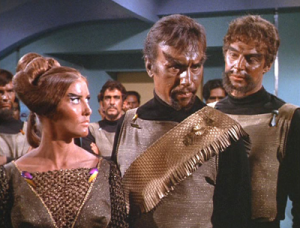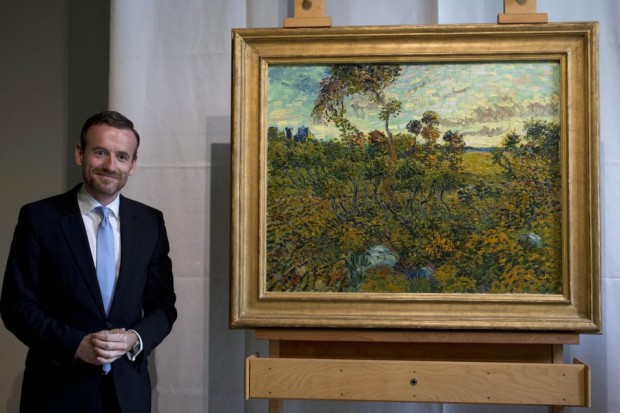Japanese prison employs cuddly mascot to soften its image
 When compared to other prisons, like that Philippine prison that has become a Youtube sensation for its “dancing inmates,” Japan’s penitentiaries are really not happy places at all. But at least one Japanese prison is trying to change that image by employing a cuddly 6-foot mascot.
When compared to other prisons, like that Philippine prison that has become a Youtube sensation for its “dancing inmates,” Japan’s penitentiaries are really not happy places at all. But at least one Japanese prison is trying to change that image by employing a cuddly 6-foot mascot.
The prison authorities at the Asahikawa Prison, located just north of Tokyo, want to start changing the image of their prison at the very least, from one seen as a dark place and depressing place to one that helps ease people back into society. With this in mind, they have employed Katakkuri-chan – a mascot with a square face and a huge purple flower on its head – to at least make the prison more accepted by the Japanese society. It is not at all that strange for mascots to be “employed” like this, as in Japan, life-size mascots are popularly used to promote towns, regions, brands, and even causes. Katakkuri-chan has a male and female version and it wears the prison warden uniform.
“Prisons have the image of being isolated places that have no contact with the rest of society and are surrounded by imposing grey walls,” a spokesperson for Asahikwa Prison said. The spokesperson further added that the mascot was employed “to change the image into that of a facility open to society and supported by society.” Katakkuri-chan had first appeared at a local fair and saw thousands of people greet the mascot, which to the authorities meant a positive reception to the idea behind the mascot. “Of course, prisons are for people who have committed crimes and people tend to consider them unwelcome in their neighborhood,” the spokesperson said. “But society has to play its part in supporting the rehabilitation of people who have served their time.”
Government website offers Klingon translation

Klingons are recurring antagonists in the 1960s television series Star Trek: The Original Series
If you wanted to ask an Illinois Department of Employment Security professional how to appeal a denied claim – in Klingon – you would say: vaj tem DoQ, chay’ Qu’ appeal?
That means, if my claim is denied, how do I appeal?
You can learn how to ask many questions in Klingon – an unofficial language created for humanoid characters in the “Star Trek” television series and movies – on the IDES website. The site offers translations via Microsoft Translator. The current options are Spanish, Polish, Simplified Chinese, Russian and Klingon.
The Klingon translation started out as a promotion for the “Star Trek Into Darkness” movie that premiered in May. It has remained long after the movie release because the department received positive feedback from some who found it humorous. It also has managed to draw more traffic to the department’s website, spokesman Greg Rivara said.
“We kept it up because every now and then, people notice it, and whenever people are drawn to our website to see the benefits that we offer, that’s a good thing,” Rivara said
The unique language doesn’t cost the department any money: Rivara said the Microsoft translation service is free. While the 280 or so pages on the department’s website can be automatically translated, department staff members review each page in each language for accuracy and nuance. The department did not take time to review Klingon – so some words, like “appeal” and “unemployment,” don’t translate on the site.
“To the best of my knowledge, we don’t have any certified Klingon translators on staff,” Rivara said.
New Van Gogh identified

Van Gogh director Axel Rueger with newly discovered “Sunset at Montmajour”
A painting that sat for six decades in a Norwegian industrialist’s attic after he was told it was a fake Van Gogh was pronounced the real thing Monday, making it the first full-size canvas by the Dutch artist to be discovered since 1928.
Experts at the Van Gogh Museum in Amsterdam authenticated the 1888 landscape “Sunset at Montmajour” with the help of Vincent Van Gogh’s letters, chemical analysis of the pigments and X-rays of the canvas.
Museum director Axel Rueger, at an unveiling ceremony, described the discovery as a “once-in-a-lifetime experience.”
“This is a great painting from what many see as the high point of his artistic achievement, his period in Arles, in southern France,” Rueger said. “In the same period, he painted works such as ‘Sunflowers,’ ‘The Yellow House’ and ‘The Bedroom.'”
Museum officials would not identify the owner who brought the painting to them in 2011 to be authenticated. Van Gogh paintings are among the most valuable in the world, fetching tens of millions of dollars on the rare occasions one is sold at auction.
The roughly 37-by-29-inch “Sunset at Montmajour” depicts a dry landscape of twisting oak trees, bushes and sky, and was done during the period when Van Gogh was increasingly adopting the thick “impasto” brush strokes that became typical of his work in the final years of his short life.
It can be dated to the exact day it was painted because he described it in a letter to his brother, Theo, and said he had painted it the previous day — July 4, 1888.
“At sunset I was on a stony heath where very small, twisted oaks grow, in the background a ruin on the hill and wheat fields in the valley,” Van Gogh wrote. “It was romantic. … The sun was pouring its very yellow rays over the bushes and the ground, absolutely a shower of gold.”
But then Van Gogh confessed that the painting was “well below what I’d wished to do.” Later he sent it to Theo to keep.
From The Chicago Tribune, Japan Daily Press and YahooNews



